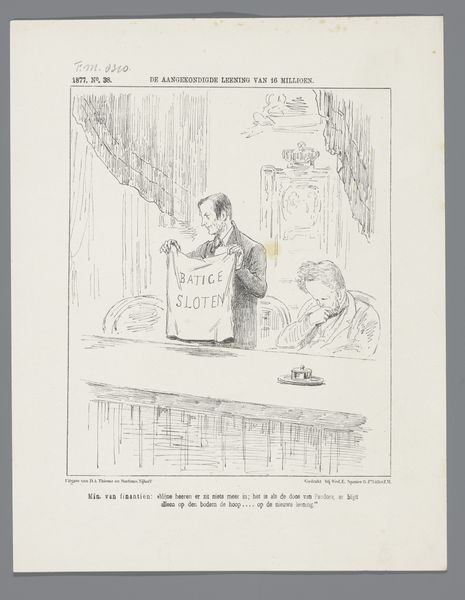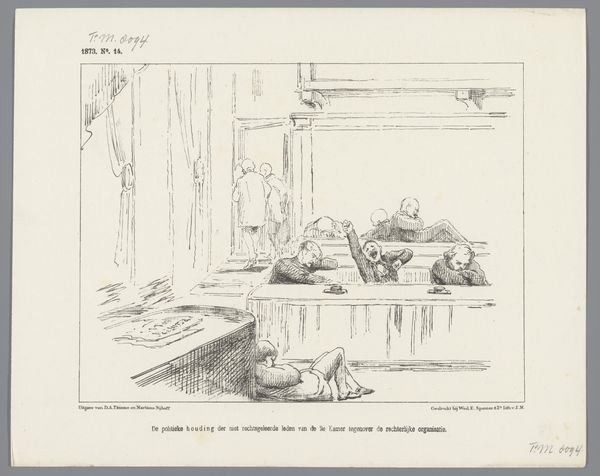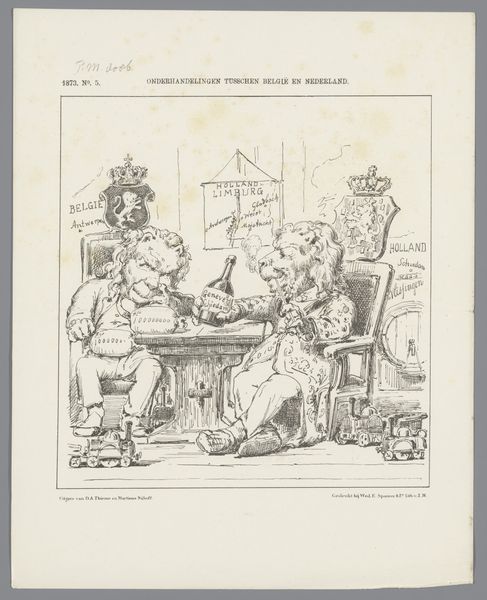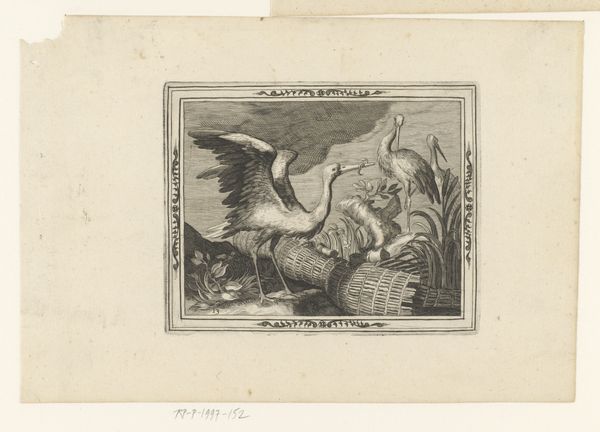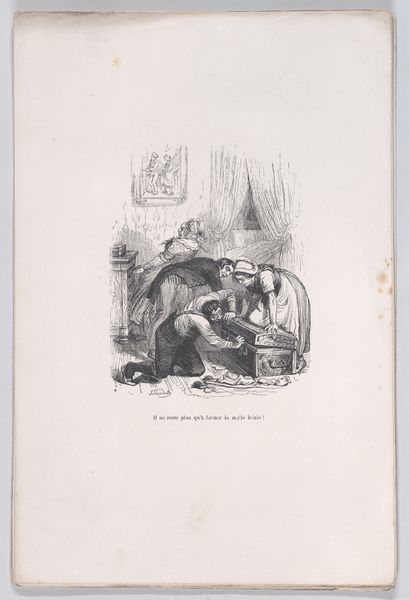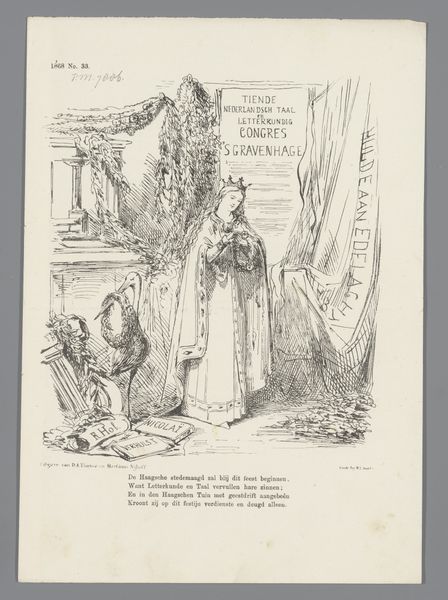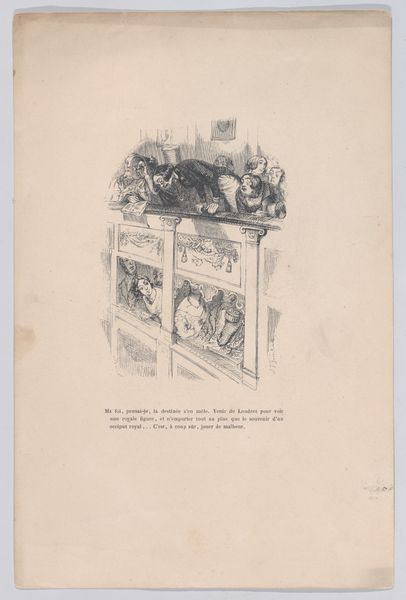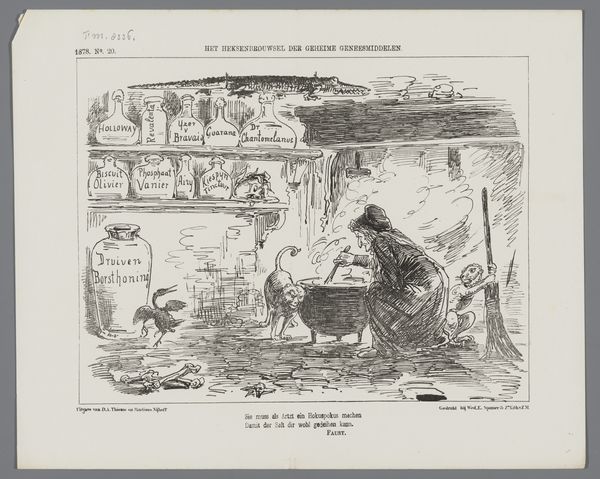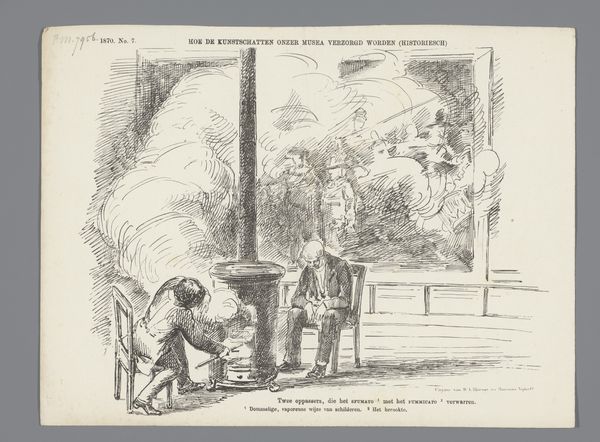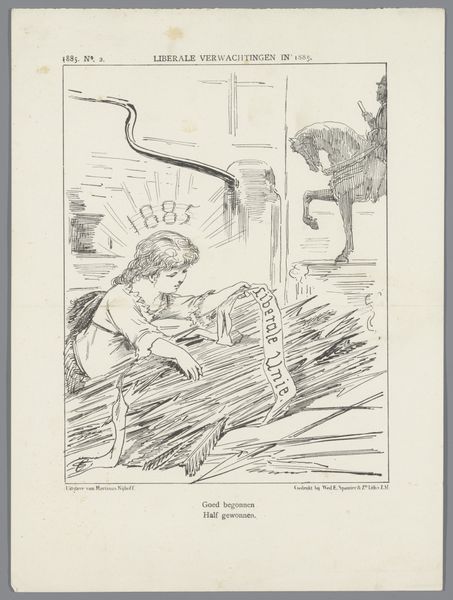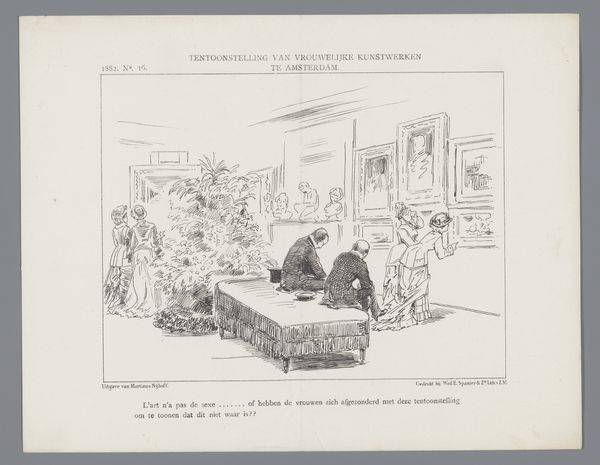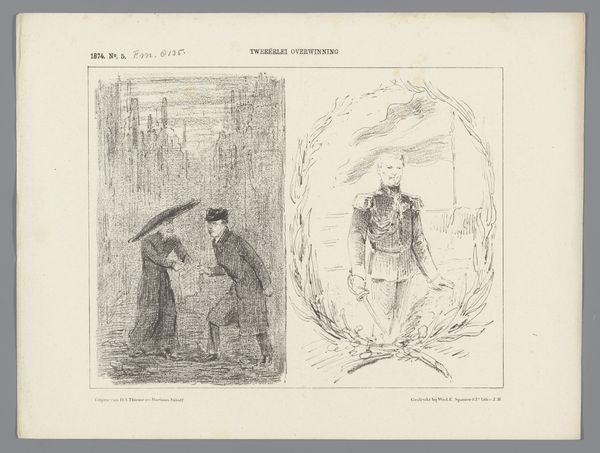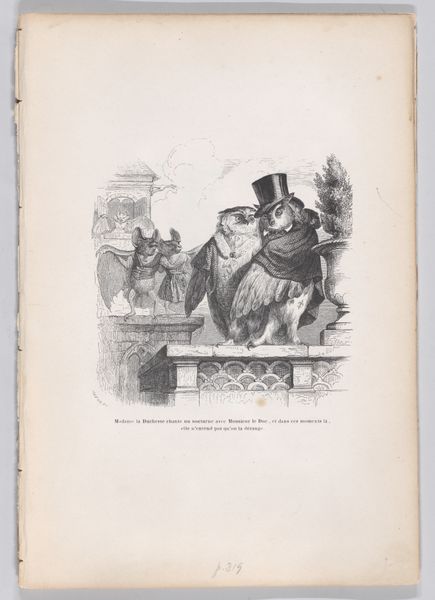
Dimensions: height 215 mm, width 275 mm
Copyright: Rijks Museum: Open Domain
Editor: This etching from 1877, titled "Spotprent" and created by Johan Michaël Schmidt Crans, looks like a satirical drawing done with pen and lithograph techniques. The image features a seated man and several winged figures, perhaps spirits, floating near him. It has a very whimsical feel. What do you see in this piece? Curator: I see a fascinating intersection of material realities and social commentary. The choice of etching, a relatively accessible printmaking technique, allowed for the wider dissemination of this image, reaching a broader audience than, say, an oil painting. Who was this intended audience and what role did popular printmaking play at this moment in the Netherlands? Editor: I suppose the broader population; perhaps even for those who could not read, the visuals still hold meaning? But what meaning is exactly conveyed through these images? Curator: The material choices speak volumes about the artist's intent and the artwork’s social function. The seemingly simple pen lines belie a complex layering of meaning. The depiction of the man, his posture and clothing, alongside the winged figures is interesting. Consider how this artwork critiques not only specific figures, but perhaps even systems and structures within the socio-political landscape through accessible and reproducible methods. Does the satire impact specific consumers or target them indirectly? Editor: That's a very interesting observation about the role of etching in delivering political messages to the masses. It makes me think about how the production and distribution of art were integral to shaping public opinion back then. So, are you saying that art consumption reflects broader societal issues and power dynamics? Curator: Exactly! Analyzing the material production alongside its reception allows us to excavate these hidden layers and power struggles embedded in art history. We could think about it less as 'high art' and more as a form of political production intended to be broadly and iteratively consumed. Editor: I never thought about etching as a form of mass production. Thanks! Curator: You're very welcome! Looking through a material lens can often uncover previously overlooked social narratives, enabling art historical dialogue to transcend questions of beauty and aesthetics alone.
Comments
No comments
Be the first to comment and join the conversation on the ultimate creative platform.
